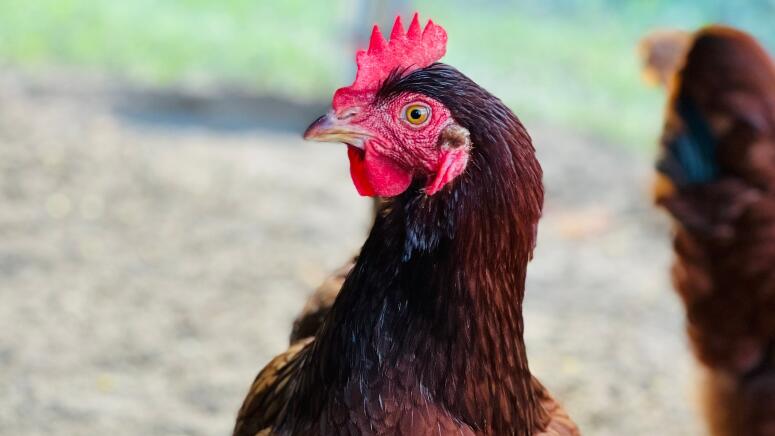Posted by Andrea Martin, Mon, Nov 23, 2015
First, a Bit of History
Gallus g. domesticus. Those are our backyard chickens. Have you ever wondered just what was going on in those feathery little heads? Bird brains, indeed.
All of the hundreds of chicken breeds available today are descended from Gallus gallus, the wild jungle fowl. Domestic chickens are not far removed from these endangered Southeast Asian fowl. This is great news for us chicken keepers—we can bring those smarts into play and enjoy a richer and more fulfilling experience with our birds. Domestic chickens may look very different on the outside (e.g., Silkies seem more closely related to bunnies than wild pheasants), but our backyard buddies are harboring vast intellectual resources… beauty and brains.
Why is being called a “bird brain” really a compliment?
Animal cognitive scientists have unearthed an amazing amount of information regarding the intelligence of birds—and this is exciting news for us. Once you learn how to harness and shape that cleverness, your relationship with your chickens will really blossom. Chicken behaviorist Dr. Nichols regularly plays on these bird brain facts: As “a trick at conferences, I sometimes list these attributes, without mentioning chickens, and people think I’m talking about monkeys.”
The Chicken Challenge: What Contemporary Studies of Fowl Mean for Science and Ethics (2012), shows the complexity of chicken behavior and the depth of the birds’ brainy capabilities. Like many species of birds, chicken language is complex and nuanced, echoing the speech of dolphins, whales, and primates. Chickens demonstrate Theory of Mind and understand the idea of “self.” Chickens recognize their own image in a reflection, know that others have thoughts and intentions, and understand that what they do can influence others’ actions.

Here’s more…
- Chickens demonstrate self-control and inhibition. They practice sophisticated foraging and safety decisions
Chickens anticipate and plan for the future. They also worry, exhibit empathy, deceive and plot revenge - They understand that hidden objects are still there, and can grasp abstract ideas, concepts of physics, mathematics, and gravity—and that actions have future consequences
- Chickens learn from observation, hold and use information, and transfer skills and knowledge. They pass down cultural knowledge (social rules, foraging tips, safety practices, dust bathing methods, and more) across and down generations
- Chickens watch and think about what you are doing. Like mini Jane Goodalls documenting human behavior, chickens learn your patterns, your language and how you do things!
Tidbitting is not just for roosters
We have all heard the rooster call out, “Took! took…took!” to signal that he has found some food. Hens will also do this for their chicks. Bonding over food is an important social ritual for many animals, including humans. Sharing food with your chickens will create a draw and put you in high standing among the flock. Your chickens will immediately realize that you bring great things and are pretty fun to be around!
Creating the “draw” offers many perks for keepers. Your chickens will recognize you as a good thing, making them easier to catch, herd and train. Your chickens will learn that you are not a threat. This creates an enriched environment while reducing chronic stress—for both the chickens and you.
Training chickens isn’t any different from teaching pet dogs. The only thing you will notice is that the chickens learn after only one trial—and the sessions will also involve them seizing on the situation to begin training you. Unlike dogs, chickens act and think as individuals; they do not have a fixed hierarchy and do not “obey” or have concepts of a “leader.” Training is not a “physical” activity (think Pavlov’s dogs), but rather a mental engagement exercise. Teaching is all about communication.
Tools:
Manna Pro® knows chickens! Choose from their vast selection of chicken treats: Mealworm Munchies™, Harvest Delight™ Poultry Treat and Garden Delight™ Poultry Treat. Mealworm Munchies are your best choice for training.
Chicken Tricks: Practical Training Tips
Getting the chickens to come when called. This simple and useful activity is based on the concept of creating a “draw.” This means that the birds will intentionally and actively seek you out. They readily respond to vocal cues, and with a 360˚ field of vision, – they can see you comin’.
Teach the chickens to want to be with you by giving them proof that you have great things. Begin by calling the birds with a pleasant and uplifting tone (use the same call each time; remember that you are teaching the chickens a language, so “apple” can’t mean “apple” one day and “grape” the next). Initially you are just showing the birds that you are talking to them. They will very quickly begin interacting with you. The critical phase is the connecting one, and it usually takes only one session. The breakthrough occurs when the birds realize you are talking to them with intent. From this point on, you can begin teaching more commands and more complex commands.
Build the chickens’ anticipation by shaking the treats and expressing excitement over them. Sprinkle some of the treats out for them to munch on. Now, shake the bag and ask the birds to follow you. Done! Now your birds will come when called and follow you.
Trick Training. Use treats to train your birds to do just about anything, from jumping on your lap to negotiating agility courses. The step-by-step process is the same.
Get your birds to jump on your lap (if they don’t do this already!) by offering motivation in the form of treats. Begin by hand feeding the chickens to get them used to being in your space. Do not move ahead with any step until the bird is completely calm. Treat “snatch and runs” do not count—don’t reward those. The bird must wait and take the treat from your hand.
Kneel on the ground and ask the chicken to walk between your legs in order to reach the treat. This tells the chicken that it is okay to be in your personal space and that touching you with their body is not “scary.” Never make sudden movements during any session. Once the bird is completing that step in a relaxed manner, start to rub the treat under the bird’s chin and breast. Do not reach down over the bird, but only from underneath the breast. Before you know it, you will have desensitized your chicken to your presence and to being touched!
Have fun with your birds, and share your tricks with us in the comments!
Author Profile: Andrea Martin
Raised on an old fashioned farm, Andrea knew animals would be her passion. She is a poultry behaviorist specializing in chicken rehabilitation and rescue. She teaches courses in writing and sustainability at a local university and her current work involves uncovering the language and culture of chickens and horses.
After earning a Ph.D. from Boston University, Andrea became a freelance writer with a focus in animal welfare. She shows clients how to connect with their chickens and horses at Black Thistle Farm, where she is “just one of the flock” – and not at the top either. After all, it’s all about the chickens!
Featured Products

